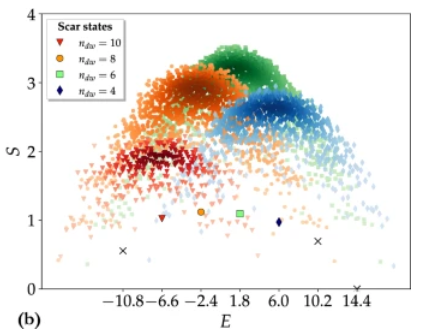EPJ Plus Highlight - Hybrid algorithm uncovers robust scar states for quantum computing
- Details
- Published on 14 July 2025

An algorithm that merges classical and quantum computing resources could help reveal robust quantum states hidden within chaotic, noisy systems
Since today’s quantum computing architectures are inherently noisy, they still struggle to generate large amounts of entanglement between qubits. One promising solution could be to target quantum scar states, which can emerge in complex, many-body systems. These states are unusually simple compared with their chaotic surroundings, and they may offer a more robust way to store quantum information – making them especially attractive for building stable quantum logic gates.
Through new research published in EPJ Plus, an international team led by Gabriele Cenedese at the University of Insubria, Italy, demonstrates how the limited entanglement in noisy quantum computers could be transformed into an advantage, making it easier to identify scar states within chaotic quantum systems. Involving a specialised hybrid algorithm, the team’s approach could help pave the way toward more scalable quantum architectures – reducing the need for complex and costly error-correction techniques.
To date, quantum circuits have remained too fragile for running large-scale algorithms. However, hybrid quantum-classical algorithms, which offload part of the task to classical computing resources, have shown promise in helping to overcome this barrier. Meanwhile, recent quantum simulations have offered deeper insights into how isolated systems lose quantum information – and how scar states can sometimes avoid this fate. But because these states are rare and embedded within a sea of chaotic states, finding them has still proven a major challenge.
To address this, Cenedese’s team used advanced simulation techniques to run their hybrid algorithm on chaotic quantum systems, allowing them to identify scar states even in noisy systems. Crucially, their algorithm achieves this in just a few steps, minimising errors on limited quantum hardware. Overall, the team’s results show that the algorithm works as expected without relying on any prior knowledge of the system – an ability that will be essential for building large-scale quantum computers.
Cenedese, G., Bondani, M., Andreanov, A. et al. Shallow quantum circuits are robust hunters for quantum many-body scars. Eur. Phys. J. Plus 140, 517 (2025). https://doi.org/10.1140/epjp/s13360-025-06461-3




